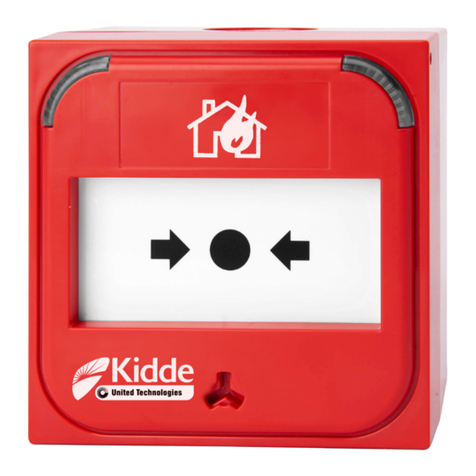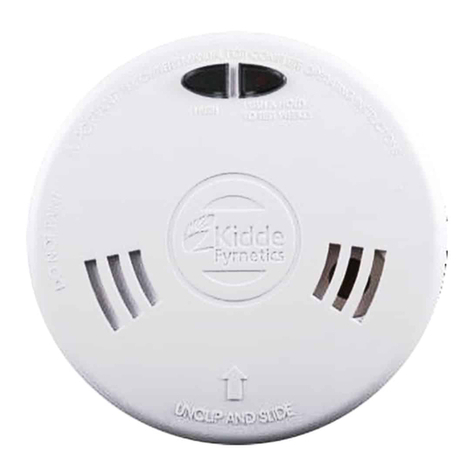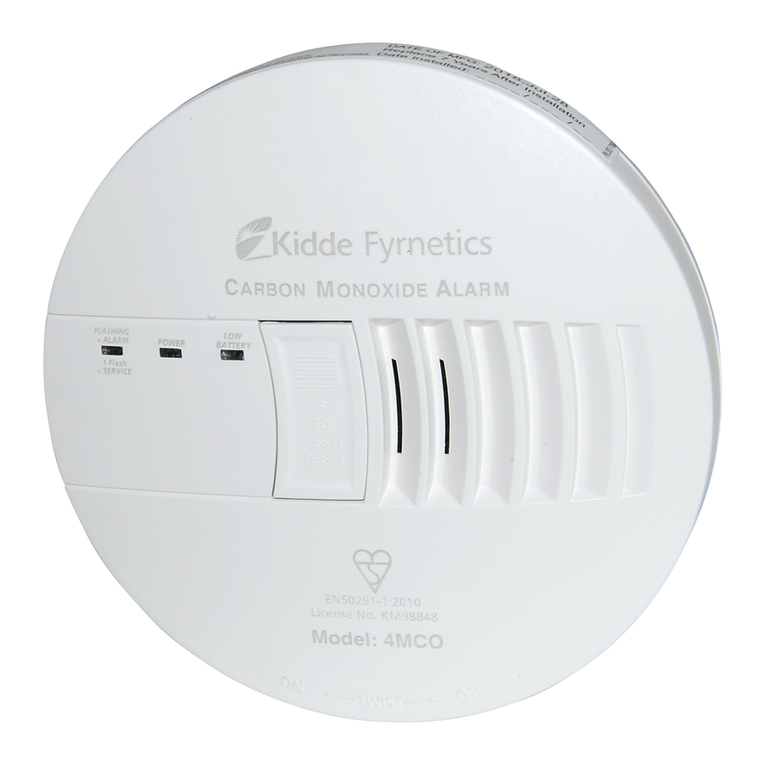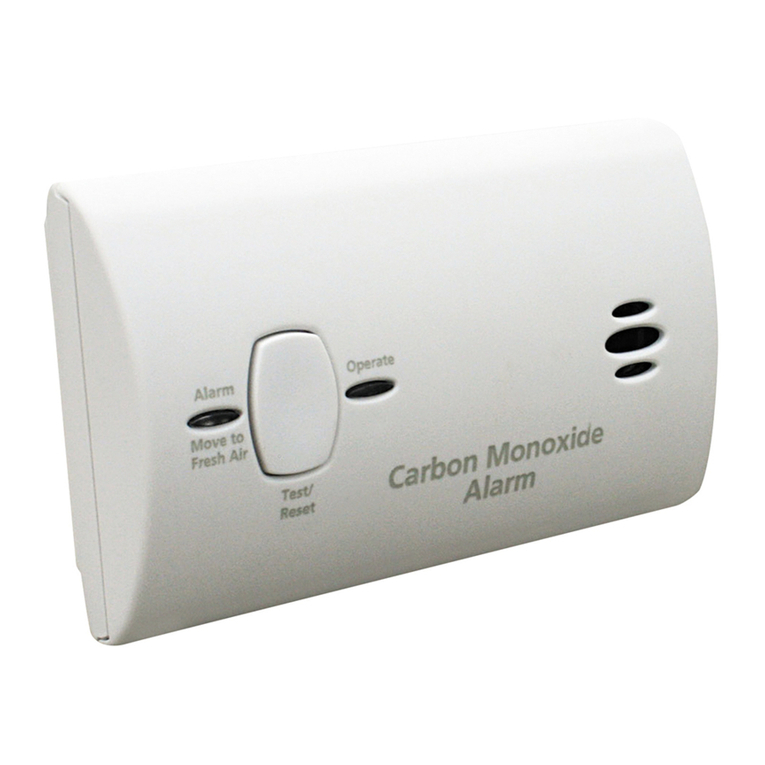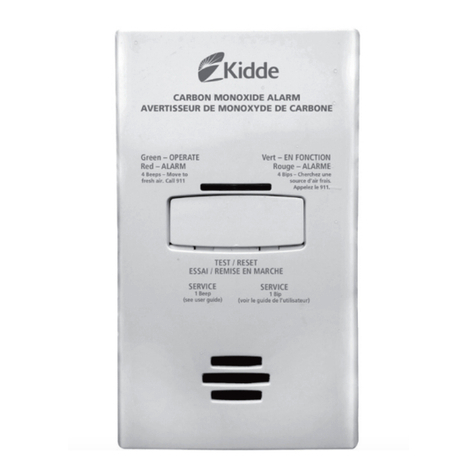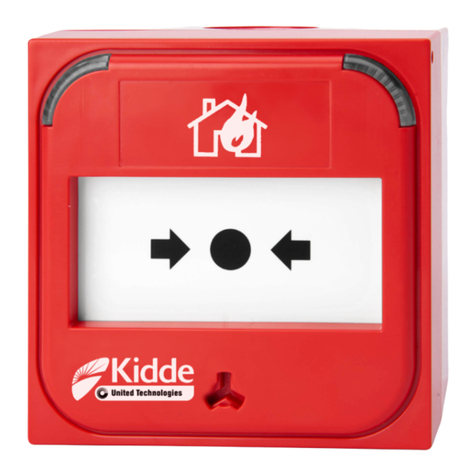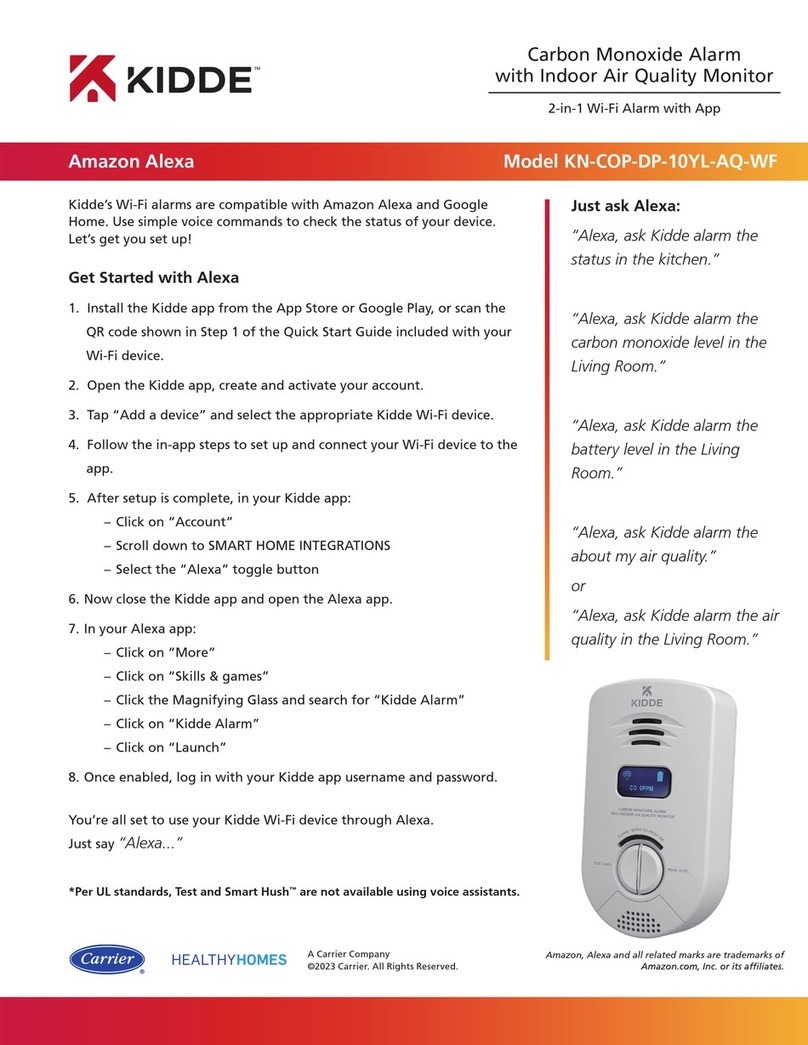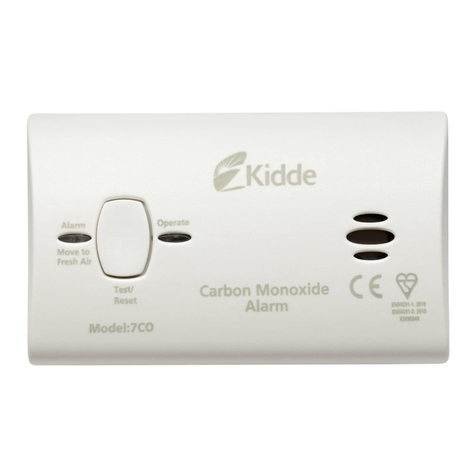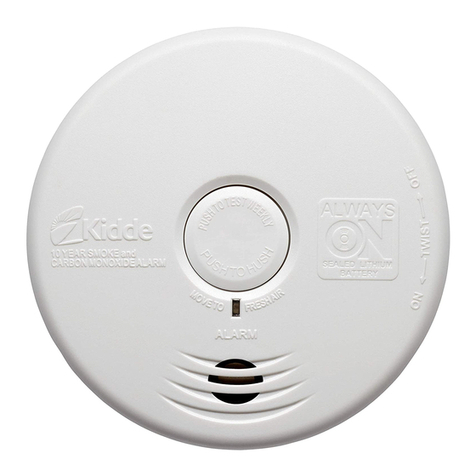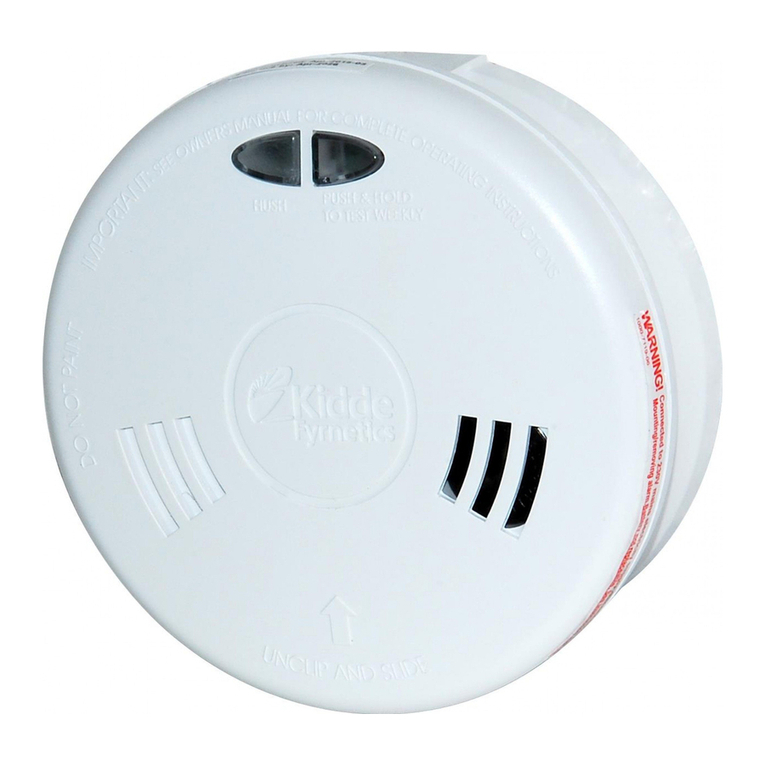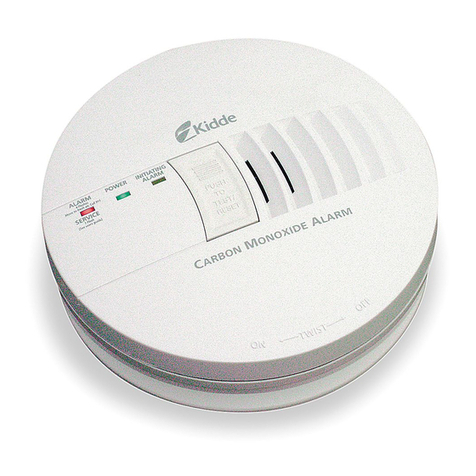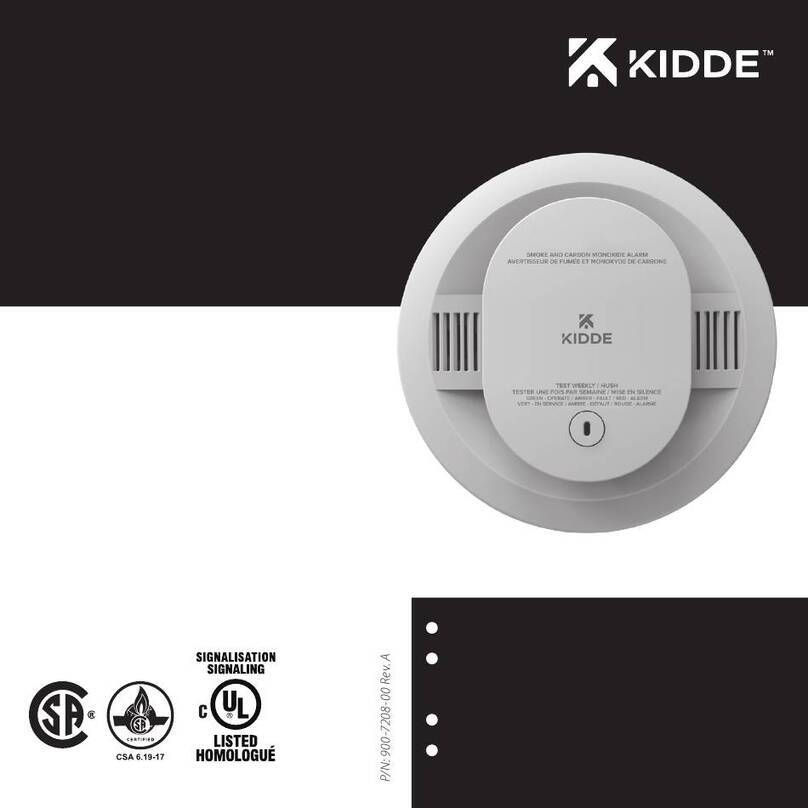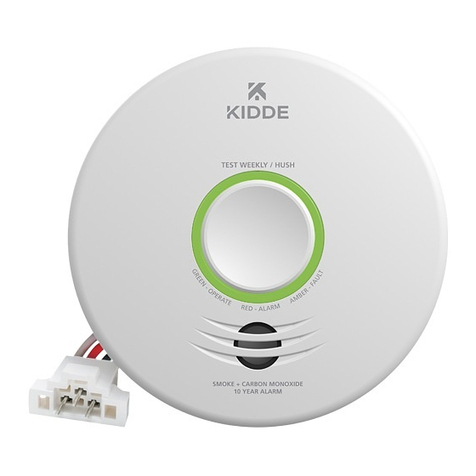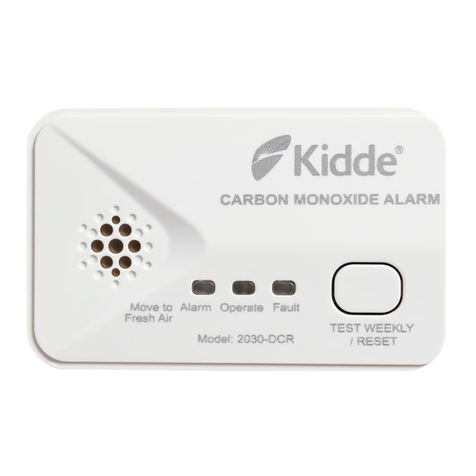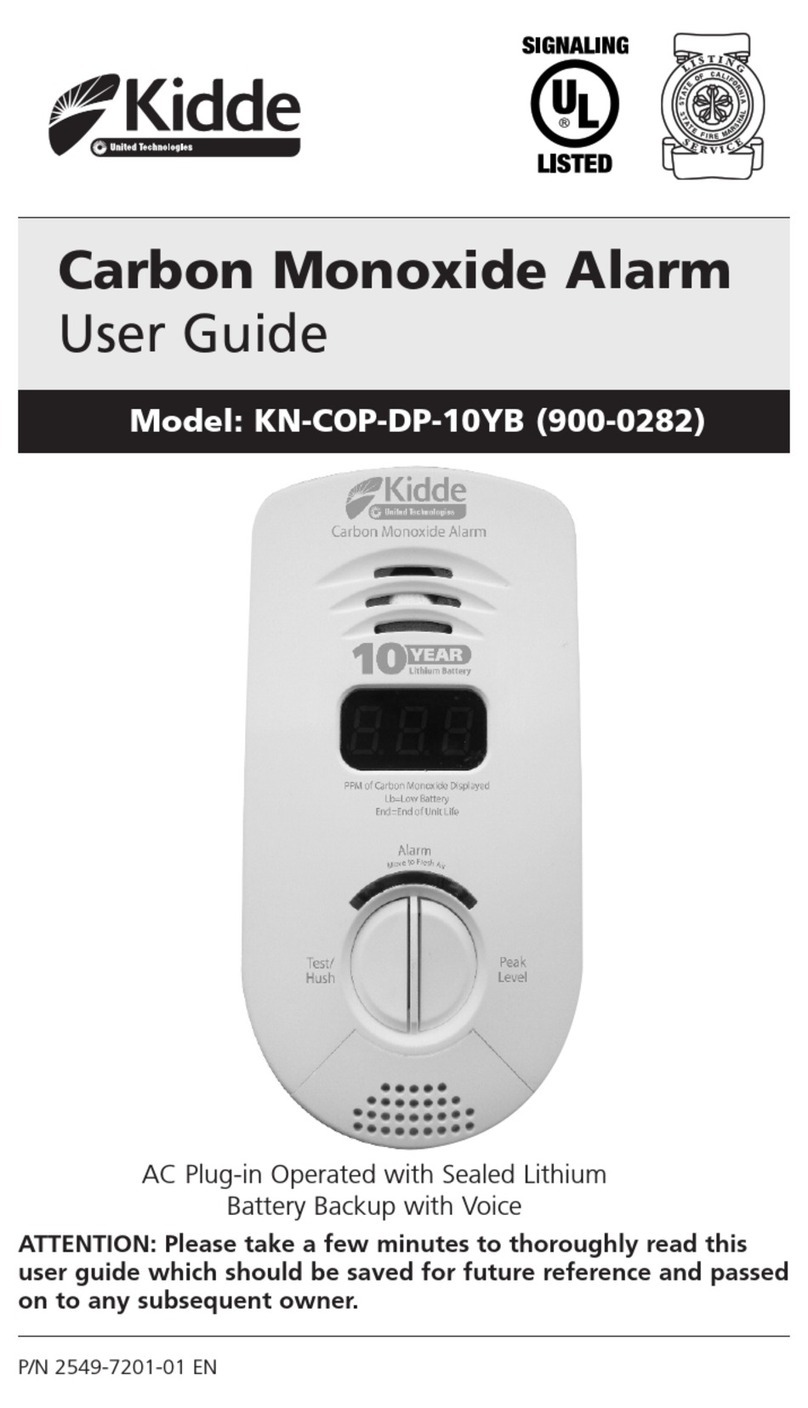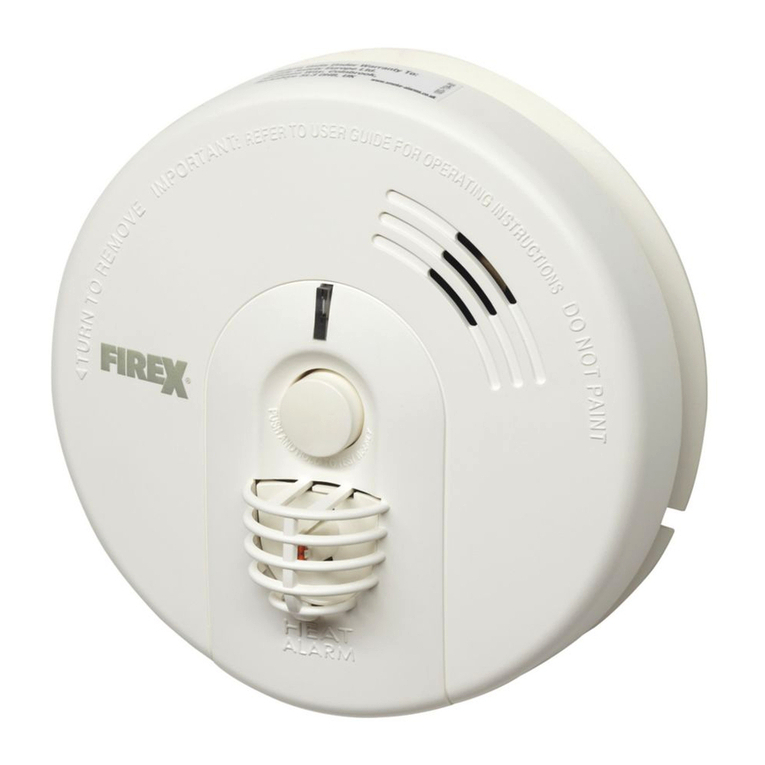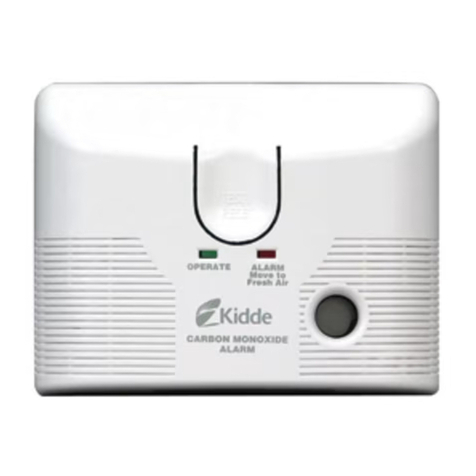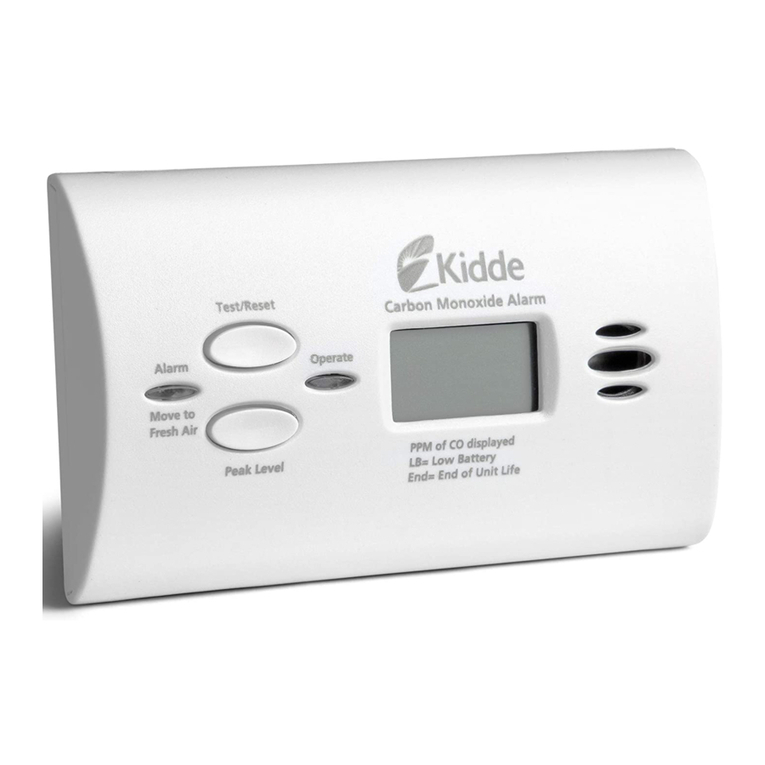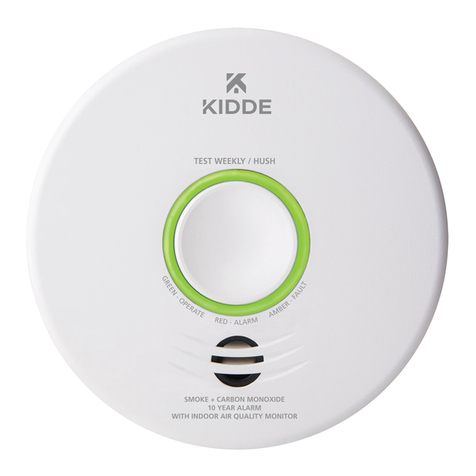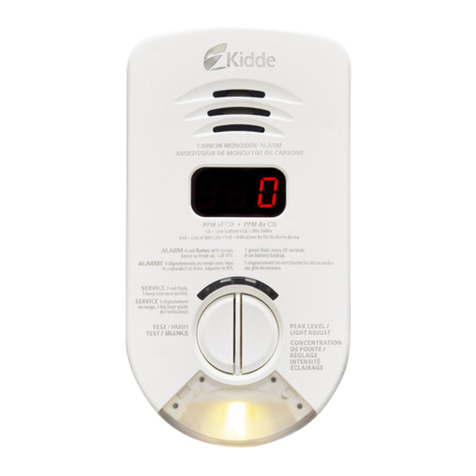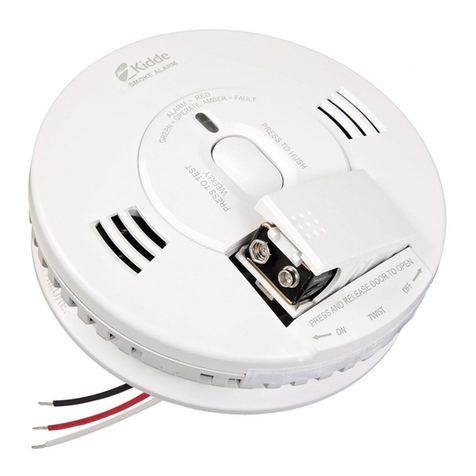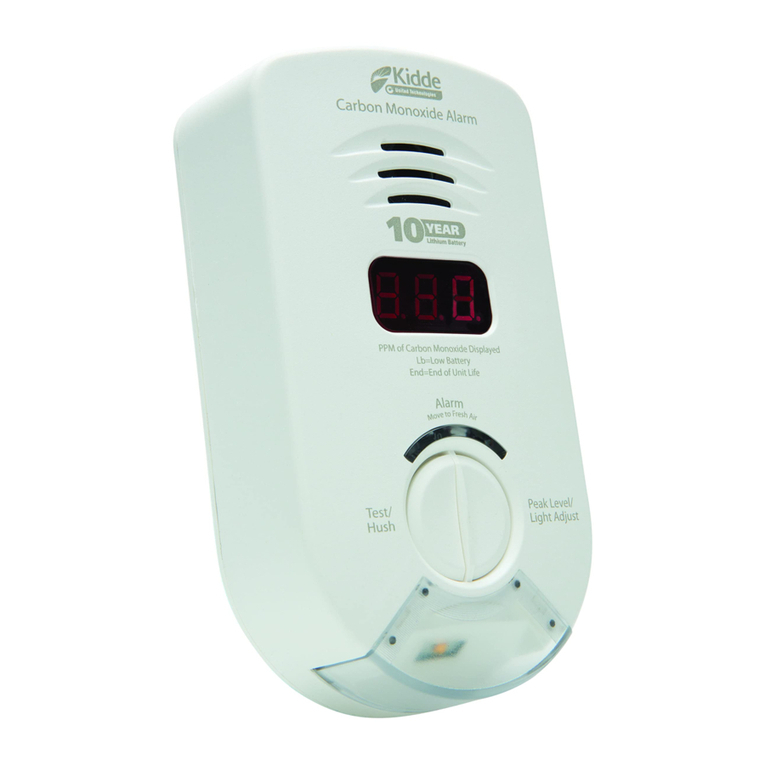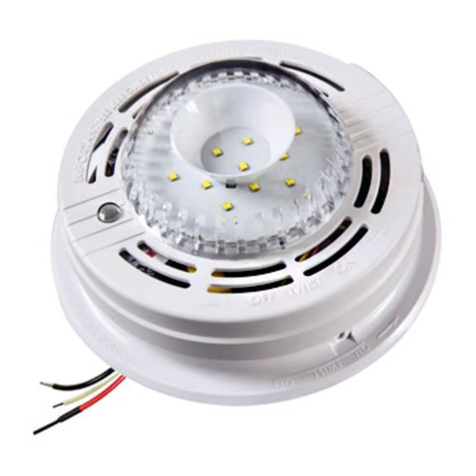14. Limitations of Smoke/Heat Alarms
Warning! Alarms are devices that can provide early warning of possible fires at a
reasonable cost; however, alarms have sensing limitations. Ionisation type alarms
offer a broad range of fire sensing capability but are better at detecting fast flaming
fires than slow smouldering fires. Optical (Photo-electric) alarms sense slow smoul-
dering fires better than flaming fires. Home fires develop in different ways and are
often unpredictable. Neither type of alarm (Photo-electric or Ionisation) is always
best, and a given alarm may not always provide warning of a fire.
Heat alarms are triggered when a temperature of 57°C is reached –they must
always be used in conjunction and interconnected to smoke alarms.
Loose batteries, where fitted must be of the specified type, in good condition and
installed properly.
AC only powered alarms will not operate if AC power has been cut off such as by
an electrical fire, an open fuse or loss of mains supply.
All alarms must be tested regularly to make sure the batteries and the alarm circuits
are in good operating condition.
Smoke alarms cannot provide an alarm if smoke does not reach the unit. Therefore,
smoke alarms may not sense fires starting in chimneys, walls, on roofs, on the
other side of a closed door or on a different floor. If the alarm is located outside the
bedroom or on a different floor, it may not wake up a sound sleeper. Equally heat
alarms will only be triggered if they are correctly sited to detect heat. The use of
alcohol or drugs may also impair ones ability to hear the alarm. For maximum pro-
tection a smoke alarm should be installed in each sleeping area on every level of a
home. Hearing impaired occupiers should consider fitting additional strobe acces-
sories to give a visual alarm.
Although smoke/heat alarms can help save lives by providing an early warning of a
fire, they are not a substitute for an insurance policy. Home owners and renters
should have adequate insurance to protect their property.
15. Service and Guarantee
If after reviewing this manual you feel that your smoke alarm is defective in any way, do not
tamper with the unit.
Refer to Section 13. Contact your Installer, Wholesale Distributor
or Landlord.
Guarantee
Kidde Fyrnetics warrants to the purchaser that the enclosed smoke alarm (but not any loose
batteries) will be free of defects in material, workmanship or design under normal use and
service for a period of 6 years,10 years on Long Life [LL] products (from the date of pur-
chase). The obligation of Kidde Fyrnetics, under this guarantee is limited to repairing or
replacing any part which we find to be defective in material, workmanship or design, free of
charge to the customer, upon sending the alarm with proof of date of purchase, postage
prepaid, to Kidde Safety Europe, Mathisen Way, Colnbrook, SL3 0HB, UK.
This guarantee shall not apply to the alarm if it has been damaged, modified, abused or
altered after the date of purchase, or if it fails to operate due to incorrect selection, siting,
installation, maintenance or inadequate AC or DC electrical power.
The liability of Kidde Fyrnetics, arising from the sale of this alarm or under the terms of this
guarantee shall not in any case exceed the cost of replacement of the alarm, in no case,
shall be liable for consequential loss or damaged resulting from the failure of the alarm or
for the breach of this or any other guarantee, express or implied, or for damaged caused by
failure to abide by the instructions supplied. This guarantee does not affect your statutory
rights. Kidde Fyrnetics makes no guarantee, express or implied, written or oral, including
that of merchantability or fitness for any particular purpose, with respect to the battery,
except built-in rechargeable/Long Life cells.
8
